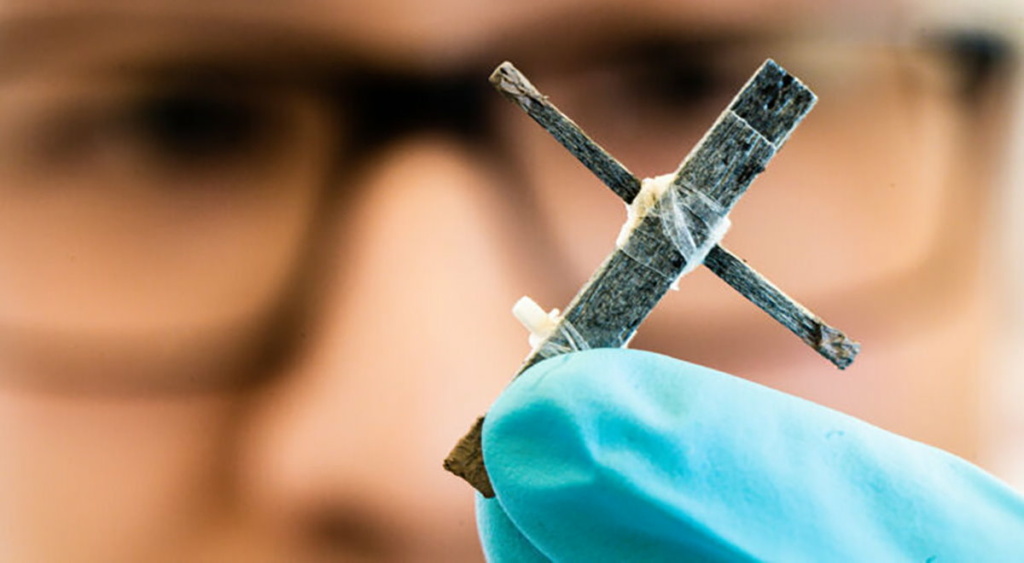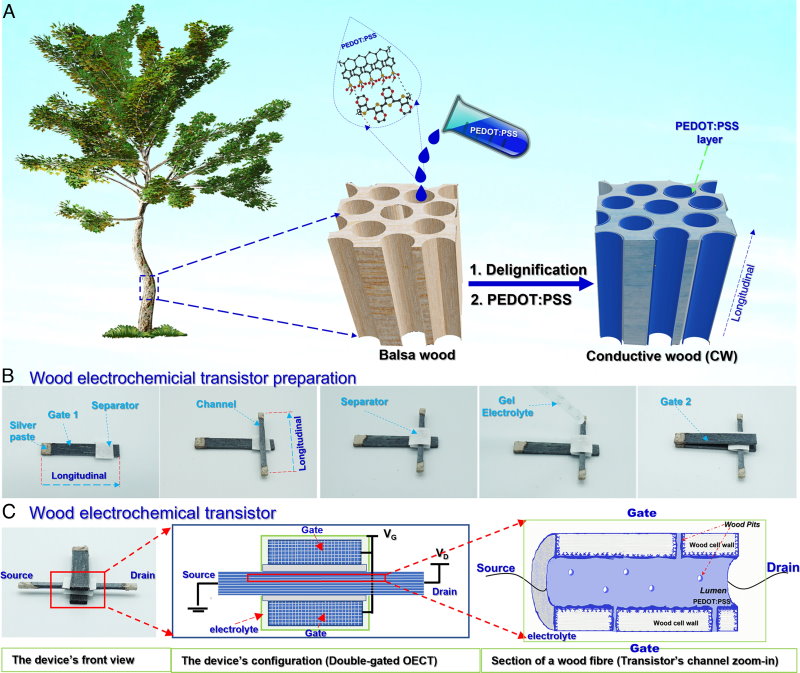
Swedes debut the ‘wooden’ transistor
Apparently tired of those tiny transistors made from silicon, Swedish researchers from Linköping University and the KTH Royal Institute of Technology decided to make some based on wood. Their T-shaped device detailed in the Proceedings of the National Academy of Sciences is about 3 cm across and has a switching frequency of well below one hertz.
In previous experiments, transistors made of wood have been able to regulate ion transport only. And when the ions run out, the transistor stops functioning. The one developed by the Linköping researchers, however, can function continuously and regulate electricity flow without deteriorating.
The researchers selected balsa wood to create their transistor, as the technology involved requires a grainless wood that’s evenly structured throughout. They removed the lignin through chemical and thermal treatment and coated the inside of the remaining cellulose fibers with a conductive polymer called PEDOT:PSS.

This modified wood material was used to build a three-terminal transistor, which proved capable of regulating electric current and providing continuous function at a selected output level. It could also switch the power on and off, albeit with a certain delay – switching it off took about a second and switching it on about five.
The researchers propose that the switching mechanism is ultimately the result of ions migrating in and out of the PEDOT:PSS layer. Here, an electrochemical reaction takes place where the cations compensate the counter anions (PSS−), and the PEDOT+ is reduced to its nonconductive form PEDOT(0). As a result, the conductivity of the transistor channel is decreased.
“We didn’t create the wood transistor with any specific application in mind. We did it because we could. This is basic research, showing that it’s possible, and we hope it will inspire further research that can lead to applications in the future,” says Isak Engquist, senior associate professor at the Laboratory for Organic Electronics at Linköping University.
Main image credit: Thor Balkhed





